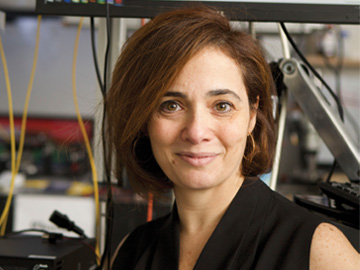
One of the most rewarding parts of a year as Optica president is the opportunity to engage directly with young scientists. With Optica, this is a worldwide endeavor. The society includes some 8,700 student members, many of whom participate in 420 Optica student chapters spread across institutions on every continent except Antarctica.
Time and again, I’ve observed that these students, even amid the hard work of earning degrees and building careers, show a unique commitment to and enthusiasm for communicating with the public about their science. And they have some creative ideas for doing so.
On a trip to Brazil in July, for example, I visited with chapters at the Federal University of Paraná, the Federal University of Technology—Paraná and the State University of Campinas in São Paulo. Among other efforts, one of the chapters developed a series of “comics” visualizing various optical effects and highlighting people in our community. Other groups were organizing get-togethers and events and were enthusiastic about how individuals who may previously have felt a bit isolated are becoming increasingly active and involved.
Above all, I saw a real passion for building community and connections. And, as I write this in late August, I look forward to visits at the end of the month to chapters in Japan and the Republic of Korea, where I’m sure I’ll encounter other amazing ideas and efforts.
These observations underscore the need to nuture the next generation of scientists and engineers in optics and photonics. By investing in young talent and fostering interest, we ensure the continued advancement of our field. For more than 20 years, the Optica Foundation has been dedicated to this endeavor. In fact, during my time as an officer at Optica, the foundation has invested almost US$7 million, impacting more than 30,000 future innovators.
This vital work is carried out through initiatives like the foundation’s Ambassadors program, which recruits emerging leaders to serve as global student mentors. In addition, the foundation provides support through various scholarships, prizes and grants. It also hosts competitions like the Optica Foundation Challenge, offering substantial funding to early-career professionals with potentially transformative ideas.
In this issue, OPN devotes several pages (starting on p. 54) to thanking the many donors who believe that by attracting, supporting and retaining the most capable young scientists and engineers in optics, we can drive breakthroughs that shape our future. I encourage you to peruse the list and consider becoming part of this generous community with a donation of your own.
Of course, another service Optica can provide students is the opportunity to present and discuss their work, in meetings such as this month’s Frontiers in Optics + Laser Science (FiO LS) conference in Tacoma, WA, USA. Over the years, this conference, which also serves as Optica’s annual meeting, has proved an especially welcoming place for students both to present their research in talks or poster sessions and to learn about an unusually broad array of topics across optics and photonics. This year’s co-location of FiO LS with the Optica Laser Congress creates even more opportunities for expanding one’s horizons. I hope to see you there!
—Michal Lipson,
Optica President
View Spanish, Chinese, French, German, and Japanese translations of this message:
